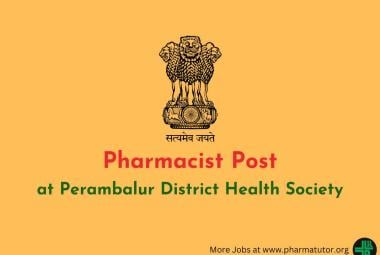{ DOWNLOAD AS PDF }
ABOUT AUTHOR
Amitava Sinha Ray
Ranbaxy Laboratories Ltd
West Bengal, India
a.amitava.s@gmail.com
ABSTRACT
Anticoagulant is an agent that is used to prevent the formation of blood clots. Anticoagulants, such as heparin or warfarin work on chemical reactions in the body to lengthen the time it takes to form a blood clot. Heparin the anticoagulant drug that is used to prevent blood clots from forming during and after surgery and to treat various heart, lung, and circulatory disorders in human body. Heparin is comparatively a strong acid that forms water–soluble salts. It is used in treatment of venous thrombosis and its extensions, pulmonary embolism (PE), peripheral arterial embolism. Smoking and alcohol may alter response to heparin. Abrupt withdrawal of heparin may precipitate increased coagulability.
INTRODUCTION
A medical student, named McLean discovered in 1916 that liver contains a powerful anticoagulant. Then Howell and Holt (1918) named it 'HEPARIN' because it was obtained from liver. However, it could be used clinically only in 1937 when sufficient degree of purification was achieved. Heparin is used as an anticoagulant drug. These are drugs used to reduce the coagulability of blood.[1]
CLASSIFICATION OF ANTICOAGULANT DRUG
Table:1 Classification of Anticoagulant Drug
|
In Vivo |
In Vitro |
|||
|
Parenteral Anticoagulants |
Oral Anticoagulants |
Heparin |
Calcium complexing agents |
|
|
Heparin, Low molecular weight heparin. |
Coumarin derivatives |
Indandione derivative |
150 U to prevent clotting of 100 ml blood |
Sodium citrate 1.65 g for 350 ml of blood, used to keep blood in the fluid state for transfusion |
|
Heparinoids-Heparan sulfate |
Bishydroxycoumarin ( dicumarol) |
Phenindione. |
|
Sodium oxalate |
|
Danaparoid |
Warfarin sod |
|
|
Sodium edetate |
|
Lepirudin |
Acenocoumarol |
|
|
|
|
Ancrod |
Ethylbiscoumacetate |
|
|
|
DESCRIPTION OF HEPARIN:
Heparin is an anionic polysaccharide of mammalian origin with irregular sequence. It consists principally of alternating iduronate and glucosamine residues, most of which are sulfated.[2] It may be described as a sulfated glucosaminoglycan. Heparin has the characteristic property of delaying the clotting of freshly shed blood. It may be prepared from the lungs of oxen or the intestinal mucosa of oxen, pigs, or sheep. Heparin is often described in the literature as standard heparin or unfractionated heparin to distinguish it from low-molecular weight heparins.
Heparin is a mucopolysaccharide, having a molecular weight ranging from 6,000 to 20,000, made up of several repeating units of glucuronic acid and sulphated glucosamine. It is comparatively a strong acid that forms water–soluble salts, for instance heparin sodium.
Heparin is a natural polysaccharide that contains a large number of linear and polydisperse chains. Molecular weight of natural heparin ranges from 3.000 to 30.000 Daltons (Da), while medical grade, unfractioned heparin has an average molecular weight of 12 to 16.000 Da.
Heparin is a nonuniform mixture of straight chain mucopolysaccharides with MW 10,000 to 20,000. Heparin is present in all tissues containing mast cells; richest sources are lung, liver and intestinal mucosa.[1]
Low Molecular Weight Heparins:
Low molecular weight heparins (LMWHs) are obtained through various methods of chemical and enzymatic depolymerization from clinical-grade unfractioned heparin.
The advantages of Low molecular weight heparins are:
a) Better bioavailability.
b) Does not bind to proteins or endothelial cells.[3]
c) The entire dosage performs the anticoagulant function.
d) More predictable dose-response.
e) Dose adjustment is not needed during its administration.
f) Its plasma half-life is longer than that of unfractionated heparin.
BIOLOGICAL FUNCTION OF HEPARIN:
Heparin can regulate the activities of a wide range of proteins that are essentials to important biological processes such as ,
- blood clotting
- pathogen infection
- cell differentiation
- cell growth and migration
- inflammation
a) Blood clotting.
Heparin id a very potent anticoagulant. Heparin is capable of interacting with coagulation cascade proteins.
b) Pathogen infection.
Viruses and othe pathogens use the heparan sulphate chains on the wall of the target cells as receptors for a coat protein.Since exogenous heparin or its derivatives can interfere the binding by competing with the heparan sulphate the infection can be prevented.
c) Cell Differentiation, growth and migration.
Most biological functions of heparan sulphate are mediated by interactions with proteins that can be promoted or inhibited by exogenous heparin.
One of the major functions of heparan sulphate proteoglycans is the ability to regulate the activity of growth factors by different mechanism.
d) Inflammation.
The potential of heparin as an anti-inflammatory drug has been shown by modest clinical trials with patients suffering bronchial asthma, ulcerative colitis and burns.
NOW YOU CAN ALSO PUBLISH YOUR ARTICLE ONLINE.
SUBMIT YOUR ARTICLE/PROJECT AT articles@pharmatutor.org
Subscribe to Pharmatutor Alerts by Email
FIND OUT MORE ARTICLES AT OUR DATABASE
ANTICOAGULANT ACTION OF HEPARIN:
Heparin is a powerful and instantaneously acting anticoagulant, effective both in vivo and in vitro. It acts indirectly by activating plasma antithrombin III (AT III, a serine proteinase inhibitor) and may be other similar cofactors. The heparin-AT III complex then binds to clotting factors of the intrinsic and common pathways (Xa, lla, IXa, Xla, Xlla and XIIIa) and inactivates them but not factor VIla operative in the extrinsic pathway. At low concentrations of heparin, factor Xa mediated conversion of prothrombin to thrombin is selectively affected. The anticoagulant action is exerted mainly by inhibition of factor Xa as well as thrombin (IIa) mediated conversion of fibrinogen to fibrin. It has been observed that in high concentrations the complex invariably interacts with thrombin and thereby inhibits its effects to promote conversion of fibrinogen into fibrin.[2]
Indications:
Prophylaxis and treatment of venous thrombosis and its extensions, pulmonary embolism (PE), peripheral arterial embolism, and atrial fibrillation with embolization; diagnosis and treatment of acute and chronic consumption coagulopathies (DIC); prevention of postoperative deep venous thrombosis(DVT), and PE. Unlabeled use (s): Prophylaxis of left ventricular thrombi and cerebrovascular accidents post-MI; treatment of myocardial ischemia; prevention of cerebral thrombosis in evolving strokes; adjunctive treatment of coronary occlusion with acute MI.
Heparin is used to prevent clotting during dialysis and to prevent intravascular coagulation during open heart surgical procedures.
PHARMACOKINETICS:
Heparin is a large, highly ionized molecule; therefore not absorbed orally.[1]Therefore it is used in injectable form. Heparin is not absorbed through the gastrointestinal mucosa and must be given parenterally, usually by i.v. infusion or deep s.c. injection. The onset of action is immediate after i.v. injection but can be delayed 20 to 60 minutes following s.c. injection. Heparin is extensively bound to plasma proteins. Heparin does not cross the placental barrier and is not distributed into breast milk. Heparin is not removed by hemodialysis.
Heparin is cleared via a dual mechanism. At low doses, clearance is predominantly through a saturable mechanism by the reticuloendothelial system. At higher doses, renal clearance through a nonsaturable mechanism also occurs.
Contra-Indications:
a) Patients with a generalized hemostatic abnormality such as hemophilia, Christmas disease, idiopathic thrombocytopenic purpura.
b) Patients with active bleeding from a local lesion such as an acute ulcer or ulcerating carcinoma
c) Patients who have had recent neurosurgery or spinal surgery.
d) Hypersensitivity to heparin.
e) Thrombocytopenia, severe liver damage.
f) Uncontrolled bleeding. [4]
Route & Dosage
- ADULTS: SC 10,000 to 20,000 U as initial dose followed by 8000 to 20,000 U q 8 to 12 hr. Intermittent IV 10,000 U as initial dose followed by 5000 to 10,000 U q 4 to 6 hr. IV infusion 20,000 to 40,000 U/day.
- CHILDREN: Intermittent IV 50 U/kg as initial dose followed by 100 U/kg q 4 hr. IV infusion 50 U/kg as initial dose followed by 20,000 U/m2/24 hr.[4]
Adverse Reactions
DERMATOLOGICAL: Necrosis; transient alopecia; urticaria.
HEMATOLOGICAL: Hemorrhage; thrombocytopenia.
OTHER: Hypersensitivity (chills, fever, urticaria, asthma, rhinitis, lacrimation, headache, nausea, vomiting, shock); anaphylactoid reactions; allergic vasospastic reactions, including painful ischemia, cyanotic limbs; osteoporosis; priapism; rebound hyperlipidemia on discontinuation.
Effects OF HEPARIN on the adrenal glands:
Heparin inhibits the secretion of aldosterone and so may cause hyperkalaemia.[5] Although all patients treated with heparin may develop reduced aldosterone concentrations. Patients on prolonged heparin therapy or those unable to compensate, such as patients with diabetes mellitus or renal impairment or those also receiving potassium-sparing drugs such as ACE inhibitors, may present with symptoms of hyperkalaemia.
Effects on the blood:
Haemorrhage is a recognised risk with heparin.[6]. Heparin has been associated with the development of thrombocytopenia. The reported incidence has varied greatly; up to 6% appears to be a reasonable estimate .[7]
Effects on lipid metabolism:
Use of heparin leads to the release of lipoprotein lipase into the plasma. Postprandial lipidaemia is reduced due to increased hydrolysis of triglycerides into free fatty acids and glycerol. Raised concentrations of free fatty acids have been reported after heparin use but the magnitude of this effect may have been overestimated.
Effects on the liver:
Increases in transaminase values, usually reversible on discontinuing therapy, have been reported in patients given therapeutic[8] or prophylactic doses of heparin.
IMPORTANT POINT ABOUT HEPARIN
- Heparin is strongly acidic and is incompatible with many drugs. Avoid mixing any drug with heparin.[4]
- Avoid IM administration.
- SC administration should be deep, preferably into fatty layers of abdomen.
- IV administration may be given undiluted over 1 min.
- Store at room temperature. Protect from freezing.
CONCLUSION
Heparin sodium is not effective by oral administration and these premixed formulations should be given by intermittent intravenous injection or intravenous infusion. It is specially used in atrial fibrillation with embolization, Diagnosis and treatment of acute and chronic consumption coagulopathies, Prevention of clotting in arterial and heart surgery, Prophylaxis and treatment of peripheral arterial embolism, as an anticoagulant in extracorporeal arterial circulation and dialysis procedures.The dosage of heparin sodium should be adjusted according to the patient’s coagulation test results.
REFERRENCES
1. Essentials of Medical Pharmacology: Sixth Edition :KD TRIPATHI;page 597-599
2. MEDICINAL CHEMISTRY BY ASUTOSH KAR::4TH EDITION; 2006;Page 887-889
3. heparinscience.com/molecular_weight.html
4. 1657.A to Z Drug Facts (A to Z Drug Facts, 4th ed) by David S. Tatro and Facts and Comparisons
5. Oster JR, et al. Heparin-induced aldosterone suppression and hyperkalemia.Am J Med 1995; 98: 575–86.
6. Walker AM, Jick H. Predictors of bleeding during heparin therapy.JAMA 1980; 244: 1209–12.
7. CSM. Heparin-induced thrombocytopenia. Current Problems 28 1990. Also available at: mhra.gov.uk/home/ idcplg?IdcService=GET_FILE&dDocName=CON2024446& RevisionSelectionMethod=LatestReleased (accessed 22/05/08)
8. Sonnenblick M, et al. Hyper-transaminasemia with heparin therapy.BMJ 1975; 3: 77.
REFERENCE ID: PHARMATUTOR-ART-2267
|
PharmaTutor (ISSN: 2347 - 7881) Volume 2, Issue 11 Received On: 25/08/2014; Accepted On: 31/08/2014; Published On: 01/11/2014How to cite this article: AS Ray; Heparin: Powerful and Instantaneously acting Anticoagulant; PharmaTutor; 2014; 2(11); 30-34 |
NOW YOU CAN ALSO PUBLISH YOUR ARTICLE ONLINE.
SUBMIT YOUR ARTICLE/PROJECT AT articles@pharmatutor.org
Subscribe to Pharmatutor Alerts by Email
FIND OUT MORE ARTICLES AT OUR DATABASE











